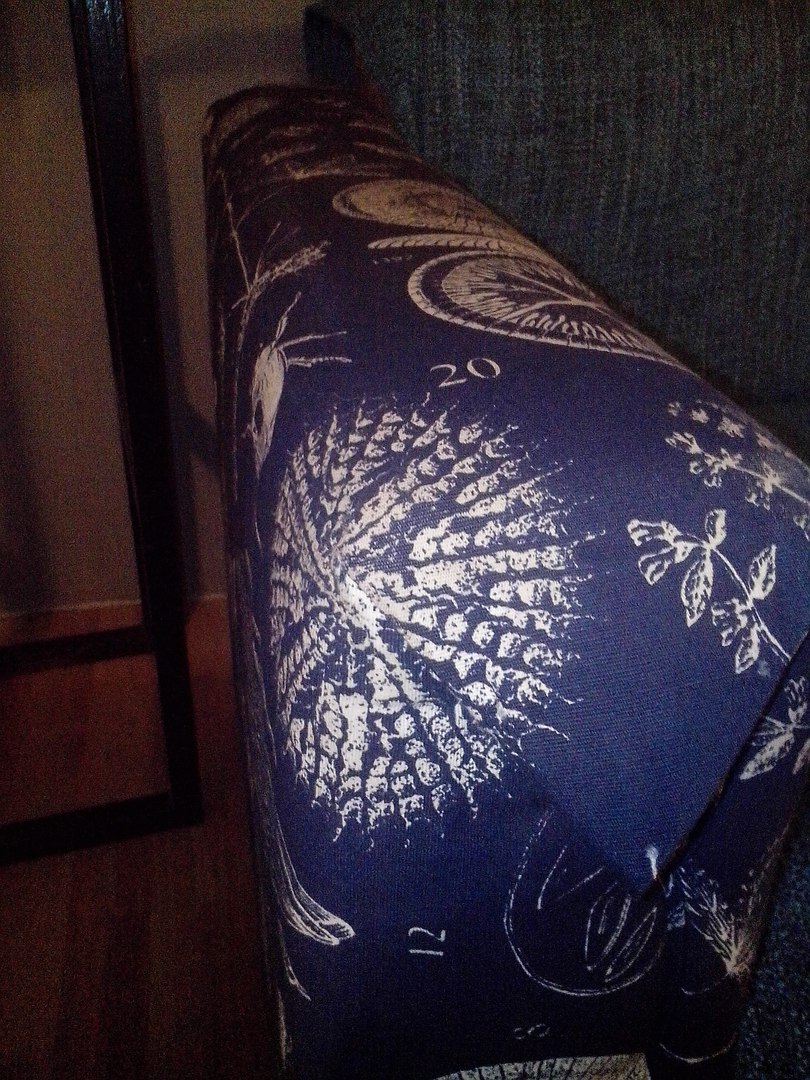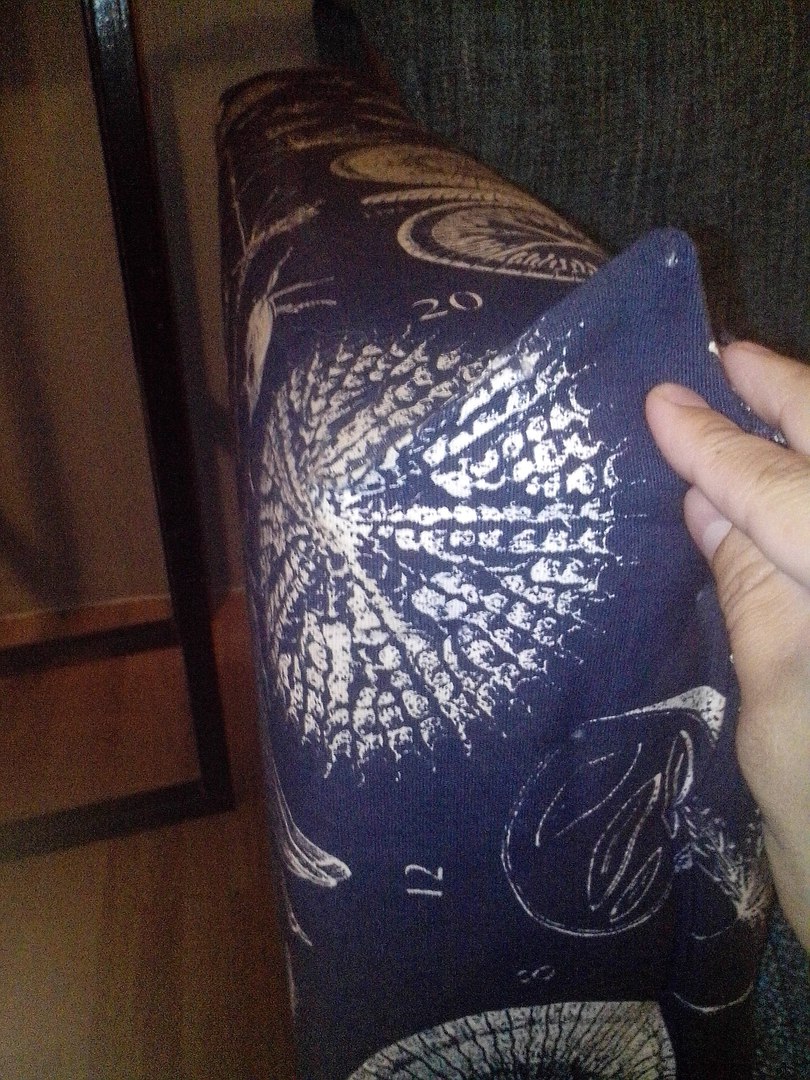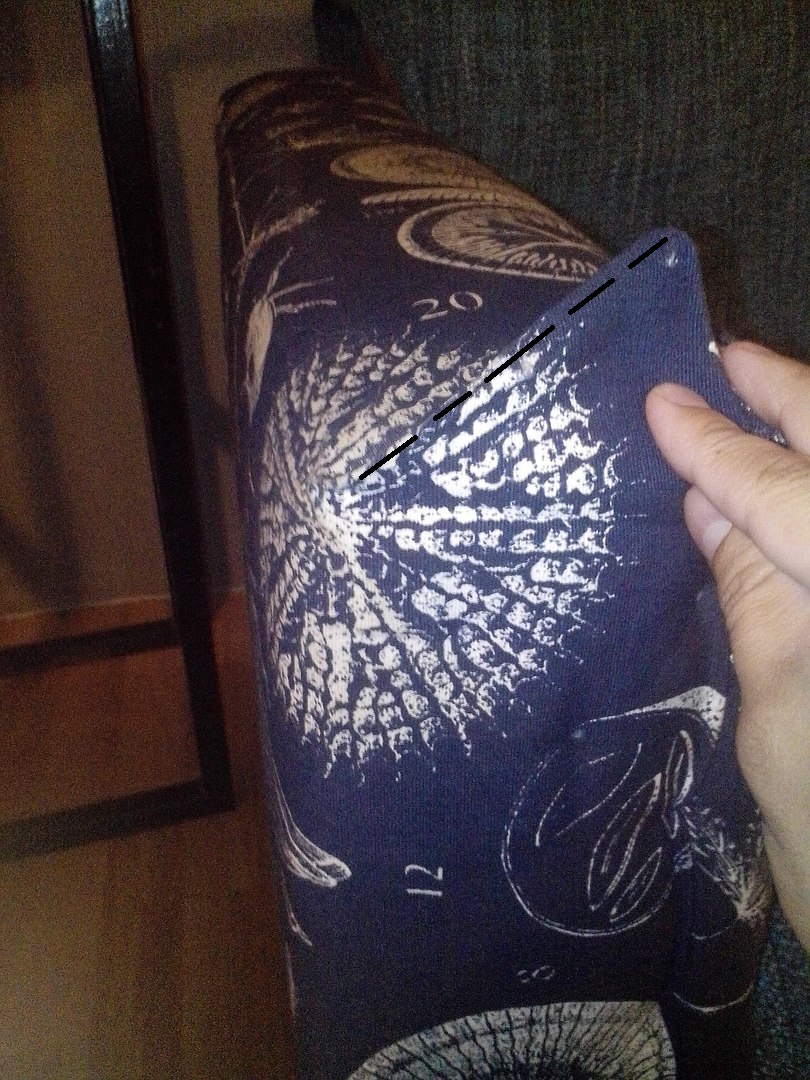I sat like that in my favorite antikafe and read the book by Michio Kaku (Hyperspace). Having decided to distract a little, I closed the book and then my eyes fell on a small couch on my side. On its upholstery periodically there were flower circles, one of which, by coincidence, hit the corner:

“Cool,” I thought. "If something two-dimensional falls on a three-dimensional angle, then it becomes like a 3D-shnoe." But there was one more thing - apparently, there was more matter than necessary, and therefore its remnants in view of the corner were simply smoothed to the bottom. Raising it to the top, I got a completely different figure with such a fin:

That is, we have a figure that looks like a circle (or a sphere), but it has two hidden sectors. Curious about what the area of such a figure might be, I sat down to count.
Calculation of the area of the figure, hitherto unknown science
It was decided to calculate simply - to add the area of a circle with a radius of 2 and the area of two hidden sectors. To calculate the area of a sector, this formula was taken:
$$ display $$ S = (πr ^ 2α) / 360 ° $$ display $$
The angle of the sector at random took 45 degrees. So, what happened:
$$ display $$ S = 12.56 $$ display $$
$$ display $$ Ssector = (3.14 * 4 * 45) /360=1.57$$display$$
$$ display $$ S general = 12.56 + 2Ssec = 12.56 + 3.14 = 15.7 $$ display $$
Already not bad, but for the Nobel Prize we still need to adjust it to the ideal result. That is, until 16, in order to later bring people the good news of the number Pi equal to 4. What is there to do? Folds, of course, form their narrow sectors, but they are clearly not enough. And here there was a cunning trick - and what if in the middle of this fin there were a few more sectors that I could not see?

If you push on this line, then it is quite possible to get two small sectors of 4-5 degrees each. Like a paper airplane. In sum, they just give something around 16 (I got 15.979 and 16.04 for 4 and 5 degrees).
Where could this come in handy?
The first thing that comes to mind is the problem of squaring the circle. The area of such a figure with a radius of r = 2 will be equal to the area of a square with side 2. Maybe it will be useful sometime to save space in rockets. However, there is a much more interesting assumption. Such a figure, if it existed in reality, would have a hidden mass, the source of which you will not notice until you open the fold. And when it comes to the hidden mass, dark matter first comes to mind. What if during the formation of the Universe or any other hyperspatial pieces that were described in the book of Michio, there is an excess of matter that cannot be disposed of, so you have to hide it in a fold in order for the object to function normally? The wheel will not go if such absurdities stick out of it (it reminds a bit of a “crutch” that the engineers have implemented, hoping that the customer will not notice). Therefore, this excess cleverly folded, and then smoothed or glued. And people do not yet have such technologies to detect such folds or open them (by the way, I read the article on baryonic filaments between galaxies on Giktams).
A reference to antiquity
Googling a bit, I did not find anything similar (or this is not described in detail in the sources available to me). It became interesting, but why did the ancient Greeks and other mathematicians not mention something similar after them? In addition to Lobachevsky, Riemann and Gauss, maybe. It seems to be simple enough, but I have not heard of a single theory even from the Pythagoreans, who fiercely hated irrational numbers.
I think the reason is that they did not have to draw on paper and, especially, on fabric. That is, they had papyrus and parchment, but in such a climate it was easier for them to draw with chalk on a blackboard or on clay tablets. Archimedes so generally on sand drew, judging by the legend. And all the next generation of geometers equaled the ancient Greeks. So, it turns out, the environment and work tools affect our thinking. Maybe for a better understanding it would be worth drawing not on paper, but on fabric? Then some things might become more obvious. I heard an interesting opinion about this, that maybe the Japanese have a different way of thinking because of the frequent exercises in origami, but this is another story.
PS If I made any computational or logical error, then please do not offer to run for the Council of Elders of the Flat Earth Society, but simply point to the place where, in your opinion, there is an error. And if everything I wrote is some sort of well-known and calculated thing, then give the link, I will read it with pleasure.